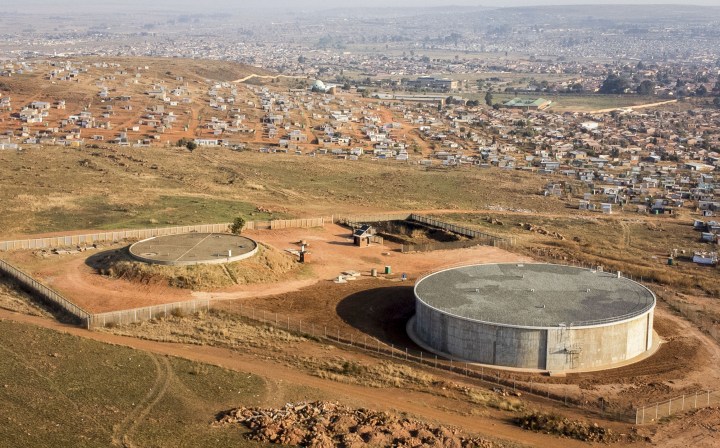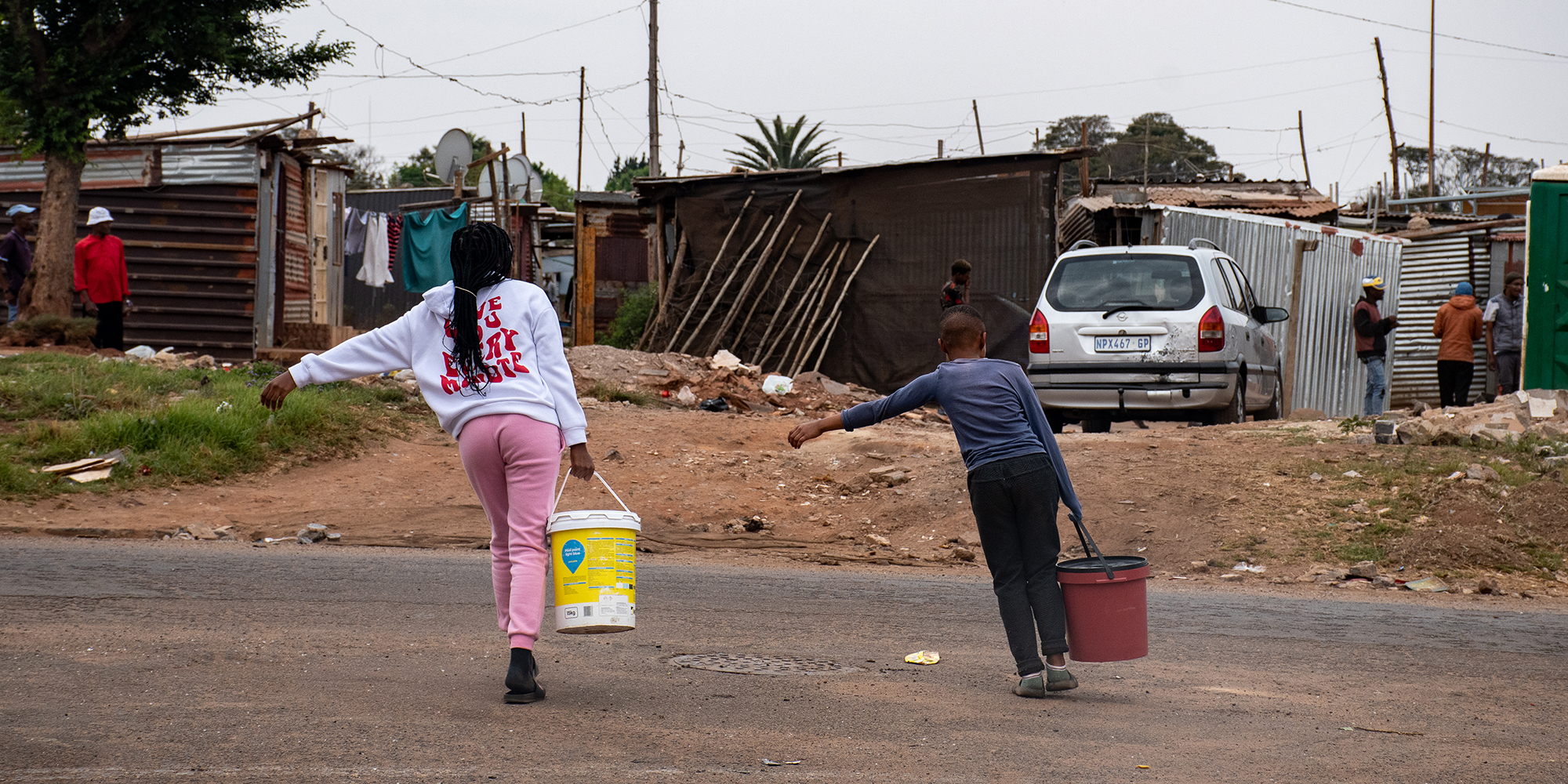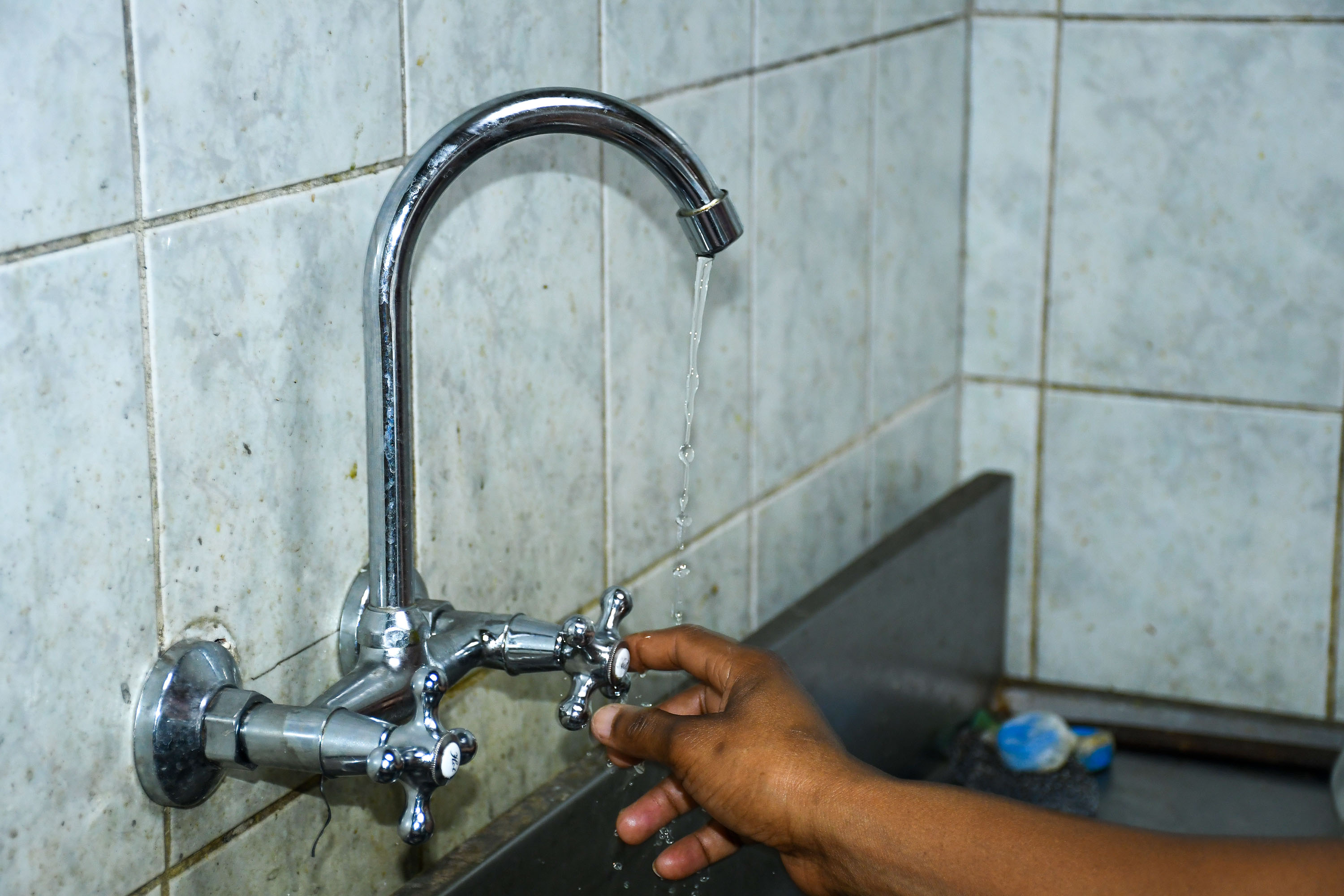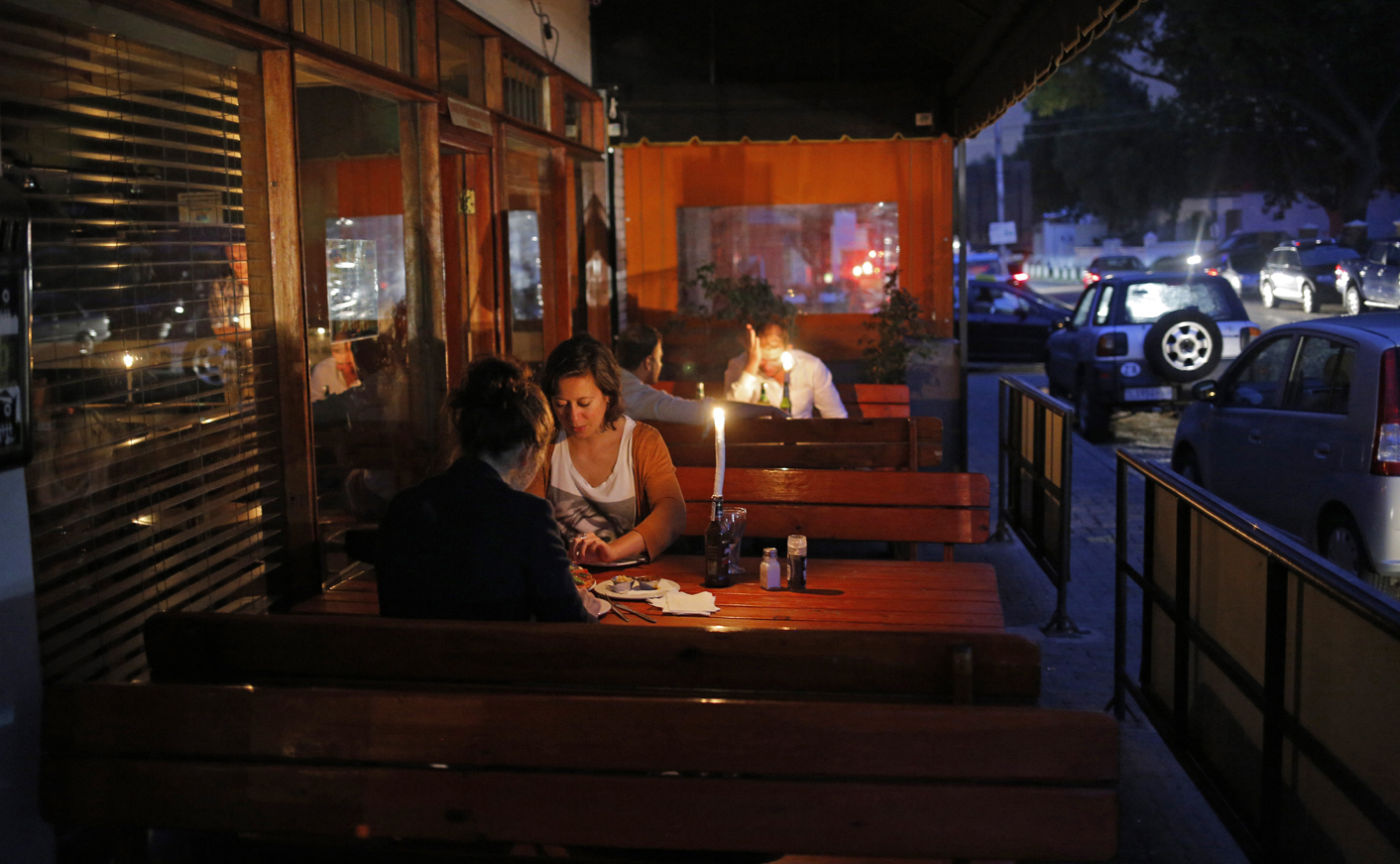POWER CRISIS
South Africans urged to use water sparingly as rolling blackouts hit precious resource

Municipalities and water entities across South Africa have called on residents to use water sparingly as they battle continued high levels of rolling blackouts and increased demand for water as temperatures soar.
Johannesburg Water said on Monday its infrastructure was facing challenges, including an increase in water demand due to the heatwave, as well as Stage 6 rolling blackouts.
“Although some of our critical sites are exempted from load shedding, the entity is managing this through back-up systems. However, our towers are taking a strain,” said Johannesburg Water.
The two primary water treatment plants that supply Gauteng (Zuikerbosch and Vereeniging) are exempted from rolling blackouts because they have been designated national key points.
However, as Johannesburg Water’s managing director, Ntshavheni Mukwevho, explained to Daily Maverick, localised systems (such as where a small pump station pumps water to a neighbourhood) are not exempt from rolling blackouts due to their positioning within the network, which exacerbates the challenge of recharging reservoirs.
#WaterRestrictions Johannesburg Water would like to encourage all the residents of the City to use water sparingly. ^K pic.twitter.com/zgSb2Wgzj5
— Johannesburg Water (@JHBWater) January 16, 2023
City Power CEO Tshifularo Mashava said in October 2022: “One of the things we are looking at is to see how to exclude [Johannesburg Water facilities] from load shedding.
“The problem currently is that most of Joburg Water facilities are embedded within our network, making it difficult to exempt them. We are also looking at partnering with them on the off-grid solutions.”
Last year, Rand Water said it had asked to be exempt from rolling blackouts, to be able to stabilise the grid.

A brother and sister carry buckets of water back to their home after filling up at a water truck amid water cuts in Coronationville in October 2022. (Photo: Julia Evans)
Joburg Water has urged residents to observe Level 1 water restrictions and reduce consumption. The restrictions include prohibitions on the use of hosepipes to water gardens, wash cars and clean driveways, and filling up swimming pools and water features between 6am and 6pm.
High-lying areas hit the hardest
“Customers in higher-lying areas will experience low pressure to no water,” Joburg Water said.
“Johannesburg Water requests that customers in lower-lying areas use water sparingly to assist with the recovery of the affected infrastructure.”
In its latest daily water supply system status update on Monday afternoon, Johannesburg Water said the Brixton reservoir and tower were operating at normal capacity but the Hurst Hill 2 system remained at critically low levels.
Johannesburg Water said it would provide customers in the higher-lying areas with an alternative water supply through mobile tankers.
Etienne Hugo, the general manager of operations for Joburg Water, has told Daily Maverick that Coronationville is the highest-lying area linked to the Hurst Hill reservoir system, so when supply is low, water doesn’t reach that area, especially during peak times in the day.
Hugo explained that over the past 18 to 24 months there have been multiple bulk infrastructure interruptions – such as the power interruptions in Vereeniging – which affect bulk supply into reservoirs, with high-lying areas like Conronationville and Westbury the first to be affected.
Read in Daily Maverick: “National shutdown threat in protest against Eskom’s rolling blackouts and tariff hikes — Ramaphosa cancels Davos trip”
Johannesburg Water’s Mukwevho said at a press conference last year that the Commando System, which affects high-lying areas including Coronationville, Sophiatown, Auckland Park, Parktown and Westville in the west of Joburg, would be prioritised.
Johannesburg Water said it would invest R340-million in the next three years to expand the Commando system’s scope and infrastructure to ensure a continuous water supply to the residents of Johannesburg.
Pretoria
The City of Tshwane also issued a warning to residents on Monday that Stage 6 rolling blackouts could lead to possible water outages, particularly in high-lying areas such as Laudium and Waterkloof Ridge.
“Much of the city’s water and sanitation reticulation systems rely on electricity,” the city’s Mayoral Committee Member for Utilities and Regional Operations, Daryl Johnston, said on Monday.
“Our water treatment works and pump stations need electricity to operate. While we have reservoirs with storage to last through short interruptions, these reservoirs rely on a continuous flow to maintain levels and be prepared for outages. That continuous flow relies on the pump stations running to pump water.

Forest Hill, Johannesburg, during a water outage. (Photo: Julia Evans)
“With load shedding happening so frequently, the continuous flow of water is interrupted.”
Johnston added that the summer heat had increased water usage and implored residents to “be careful during this time”, and restrict water use by taking shorter showers, limiting the washing of cars and delaying the filling of pools.
Cape Town
The City of Cape Town announced on 14 January: “Prolonged, high stages of load shedding are having an impact on water supply operations in Cape Town.”
The city implored residents and businesses to use less water so the city could drop to a collective water usage of 850 million litres per day.
Water supply operations are most affected in high-lying or mountainous areas which rely on water pumping stations where water needs to be pumped up to get to properties. These include Somerset West, De Novo, Kraaifontein, the Deep South and Hout Bay, where low pressure or no water could occur.
Durban
uMgungundlovu District Municipality in the KwaZulu-Natal Midlands notified residents on 13 January that “consistent dreaded Stage 6 load shedding” meant pumps were non-functional and there were challenges in filling up reservoirs.
“This is a problem facing all municipalities in the country at the moment,” the municipality said. “In the meantime, we rely on water tankering to supply water.”
What does Eskom say?
After announcing that Eskom had to postpone a media briefing scheduled for Monday afternoon, “due to emergency engagements with the President”, Eskom spokesperson Sikonathi Mantshantsha announced that Stage 6 load shedding would be replaced with Stage 4 daily from 5am until 4pm, starting on Tuesday morning, with Stage 5 daily from 4pm to 5am.
This is because Eskom expects 14 generators to come back online this week. The utility said it had obtained an additional 500 million litres of diesel on 6 January, to be “utilised sparingly to manage the pumped storage dam levels and to limit the amount of load shedding during the day”.
Eskom uses diesel to run open-cycle gas turbines – meant to be used during peak periods and emergency situations – which contribute a total of 5,700MW of capacity.
Along with breakdowns (which currently amount to 16,173MW of generating capacity), Eskom has planned maintenance for the rest of the summer.
As part of its summer planned maintenance programme (which is meant to taper off during the winter months), there are 12 generators out on planned maintenance, representing 5,804MW of capacity.

Customers eat pizza by candlelight in a popular Johannesburg bar during rolling blackouts on 8 December 2014. (Photo: EPA / Kim Ludbrook)
Energy analyst Chris Yelland told Daily Maverick that planned maintenance was one of the many complicating factors Eskom will face this year, which will make us “really hard-pressed to keep the energy availability factor the same as it is”.
Yelland said that at least one unit at Koeberg Nuclear Power Station would be down for the whole year for life expansion work, a unit at Medupi would be out for repairs for two years after a hydrogen explosion last year, and several units at Kusile would be out for at least six months
Eskom cautioned: “There is a high degree of uncertainty associated with this [stages 4 and 5] and… these changes will only be possible in their entirety if the units return to service as planned.
“Changes in the stages of load shedding can therefore occur at short notice, due to the inherent unreliability of the coal power station fleet.” DM/OBP





















 Become an Insider
Become an Insider
What does Bernard Preston have to say? Thank God we saw the writing on the wall and following the tradition we witnessed in the Netherlands, the masters of water management, built a small underground reservoir in the garden to harvest and store rainwater. That was 10 years ago.
The reservoir is long paid off and we have pristine, free water for ever.
South Africans are proving remarkably short sighted when gazing into the crystal ball. What’s happened to the nation of people who once prided themselves in “making a plan?”
If we did it again we would make it a little larger. 2m deep and 5m in diameter. It will take about two weeks to complete.